Don’t plug your RV into a welder outlet!
Show this to your electrician before he wires a 50-amp outlet for your RV!
Dear Mike,
I’m having some trouble figuring out the difference between my 50-amp RV fifth wheel plug and a 50-amp welder plug. I want to wire up a 50-amp outlet for my RV but have been told by my electrician that my RV is not 240 volts. I understand that each leg on the 50-amp outlet is 120 volts, but why don’t they consider this a 240-volt RV? I’m trying to explain this all to my electrician, but he seems confused. Thanks in advance and hope you can help me out. —David
Dear David,
Here’s a graphic of how the electrical system of your RV is wired. Even though you have 240 volts between Hot 1 and Hot 2, virtually everything in your RV needs only 120 volts to operate.
That’s right, the air conditioner(s), microwave, converter/charger, television set, hair dryer and everything else all need 120 volts (in the United States, at least). It’s called a split-phase 120/240-volt service which is exactly how every residential house is wired. In a split-phase service the neutral conductor is needed to carry the balance current back to the center-tap of the power company’s transformer. Without a neutral the 240 volts won’t divide evenly into 120/120 volts, but instead will vary wildly depending upon the load on each leg. So the only way to get this to work properly is have a neutral connection in the plug itself. The standard RV connector, a NEMA 14-50 is indeed a 4-wire plug with 2-hots, a neutral, plus a ground wire.
How is a welder outlet wired?
On the other hand, a NEMA 6-50 (pictured above), which is a standard welding connector you’re proposing to use, does NOT have a neutral conductor, only 2 hots and a ground.
So without a neutral conductor there’s no way for it to divide the 240 volts into 120 + 120 volts. Some of the confusion is that 50-amp RV shore power should REALLY be called a 100-amp service since it does supply 50 + 50 amps, which equals up to 100 amps of current draw at 120 volts. NEVER plug your RV shore power cordset into any outlet without a neutral. Very bad things will happen.
Test all newly wired outlets before plugging in!
Also, be sure to test any outlets installed by an electrician BEFORE you plug your expensive RV into it. I have dozens of emails on file from homeowners and confused electricians who didn’t understand RV wiring and did thousands of dollars’ worth of damage to an RV electrical system in seconds. Don’t make me put you in that file…
Correct RV 50-amp outlet wiring…
Here’s a reminder of how 50-amp pedestal outlets need to be wired. Don’t make an expensive mistake even if your electrician says he knows how to wire up your new pedestal. Test any new outlet with a voltmeter BEFORE plugging your RV into it.
Why does this happen?
Licensed electricians should understand residential wiring, but may never have been taught RV electrical systems. That’s why you need to double-check all RV electrical outlets installed by an electrician before plugging in your expensive RV.
Let’s play safe out there…. Mike

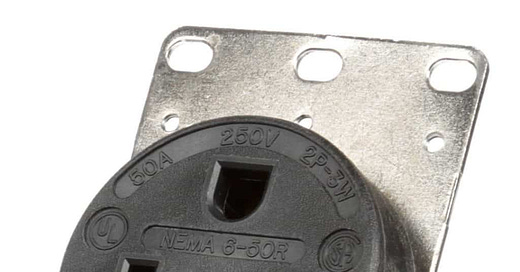


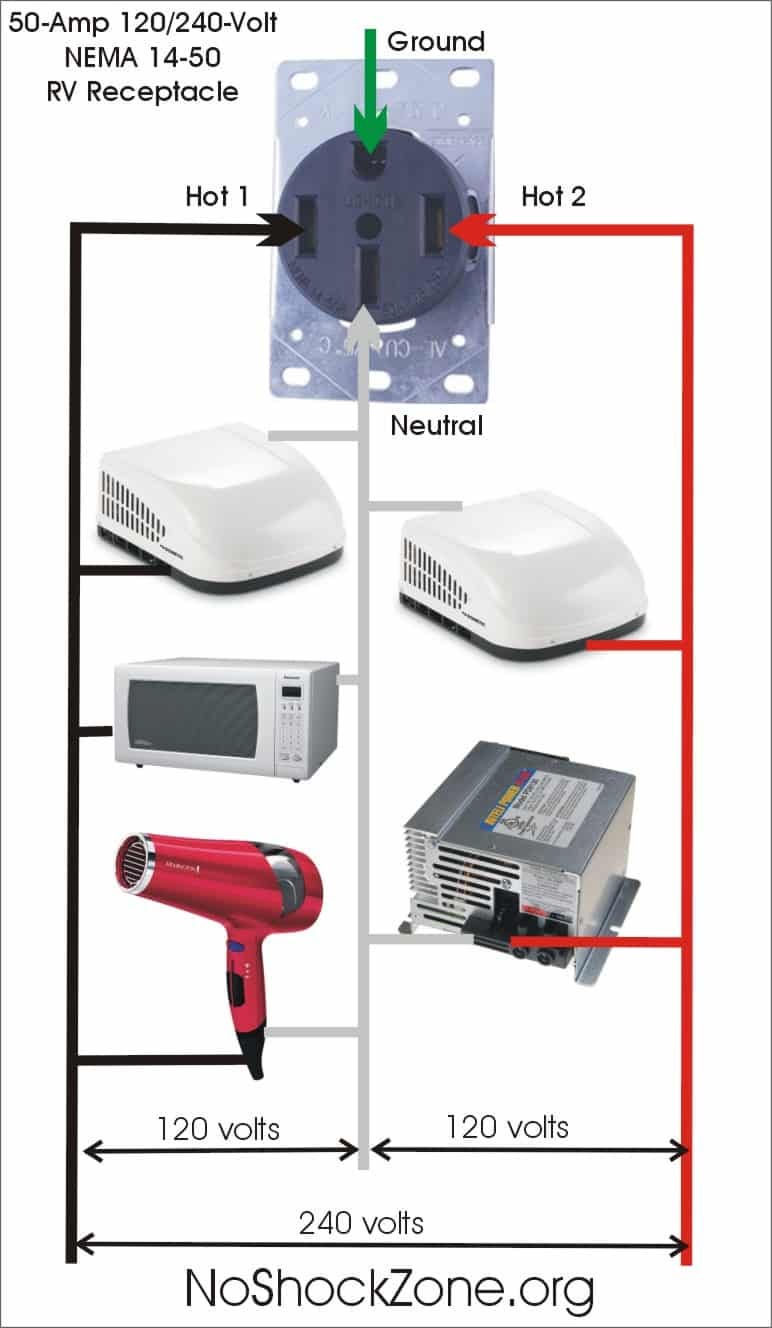

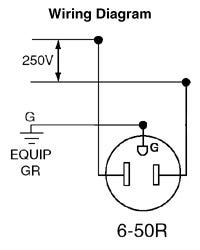
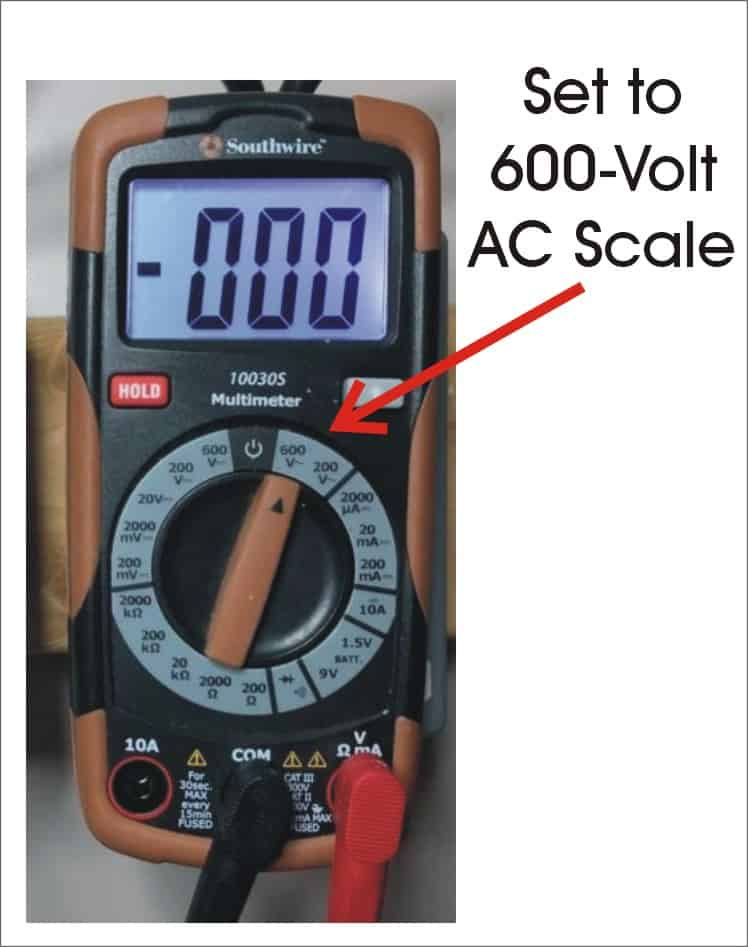
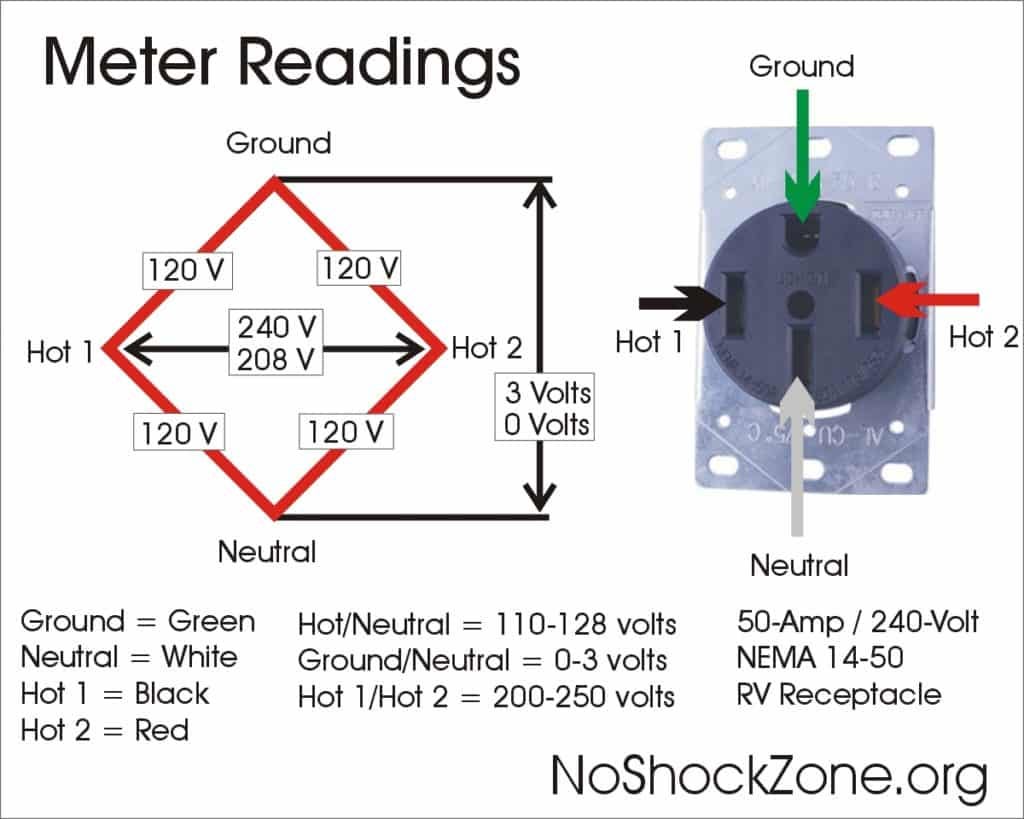

I have an '09 Country Coach Magna. It does have have a 240 volt dryer and others have a 240 volt cooktop.
How should the breaker panel look for an RV 30A and then an RV 50A setup?